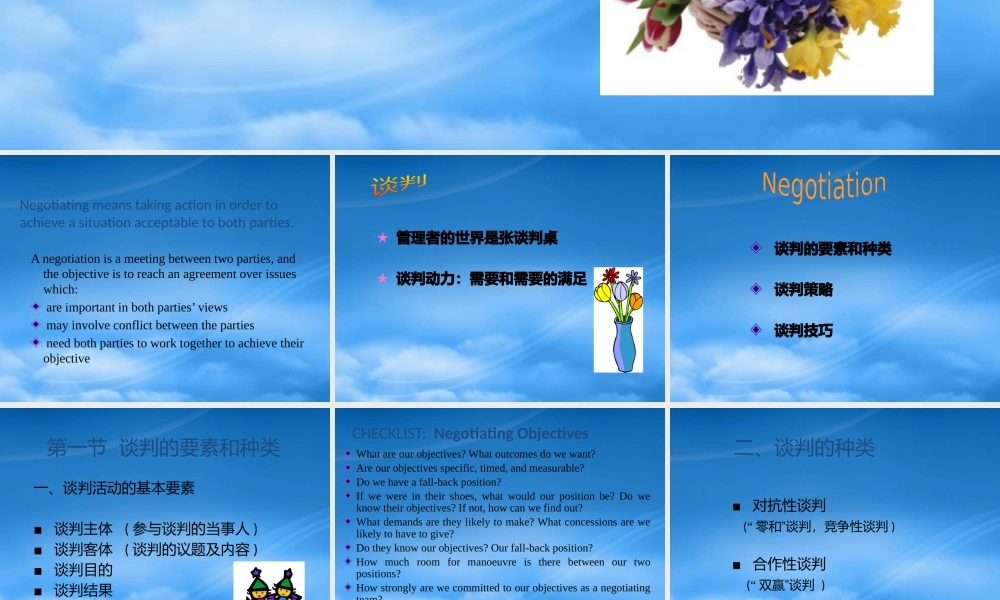NEGOTIATING Negotiating means taking action in order to achieve a situation acceptable to both parties.A negotiation is a meeting between two parties, and the objective is to reach an agreement over issues which: are important in both parties’ views may involve conflict between the parties need both parties to work together to achieve their objective ★ 管理者的世界是张谈判桌 ★ 谈判动力:需要和需要的满足 谈判的要素和种类 谈判策略 谈判技巧 第一节 谈判的要素和种类 一、谈判活动的基本要素 ■ 谈判主体 ( 参与谈判的当事人 ) ■ 谈判客体 ( 谈判的议题及内容 )■ 谈判目的■ 谈判结果CHECKLIST: Negotiating ObjectivesWhat are our objectives? What outcomes do we want?Are our objectives specific, timed, and measurable?Do we have a fall-back position?If we were in their shoes, what would our position be? Do we know their objectives? If not, how can we find out?What demands are they likely to make? What concessions are we likely to have to give?Do they know our objectives? Our fall-back position?How much room for manoeuvre is there between our two positions?How strongly are we committed to our objectives as a negotiating team?As representatives, how strongly are our constituents behind us?What is the best outcome we can realistically hope for? The worst we would be prepared to settle for? 二、谈判的种类 ■ 对抗性谈判 (“ 零和”谈判,竞争性谈判 ) ■ 合作性谈判 (“ 双赢” 谈判 )表 5 . 1 对抗性谈判与合作性谈判比较 对抗性谈判 合作性谈判 预期的目标 短期,双方目标不相协调都在竞取眼下的实利,无视长期关系的发展 长期,同时强调眼下实利和长期合作关系 对对方的观感 不信任,怀疑,相互提防 开诚布公,倾向于相信对方 谈判的导向 强调己方的要求和谈判的实力地位,无视对方的关系,甚至利用这种关系达到眼前的成果 设法满足对方的要求,认为这样对达到自己的目标更有利,努力增进至少不损害双方的关系...




